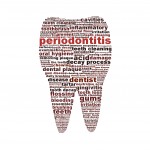
Chronic periodontitis is a common problem and its treatment and management is based on regular improving oral hygiene regiments together with routine scaling and root planing (SRP). A wide range of adjunctive treatments have been recommended to improve the effectiveness of SRP including systemic antimicrobials, systemic sub-antimicrobial dose doxycycline (SDD), locally applied antimicrobials (chlorhexidine chips, doxycycline hyclate gel and minocycline microspheres.
The aim of this review was to provide comparative treatment effect estimates for non-surgical treatments of chronic periodontitis based on scaling and root planing with adjuncts.
Methods
This network meta-analysis (NMA) is based on studies included in the 2015 clinical practice guideline on the nonsurgical treatment of chronic periodontitis. Randomised controlled trials (RCTs) reporting changes in clinical attachment level (CAL) with at least 6 months follow up were included. Parallel-arm and split-mouth studies were included, but studies of aggressive periodontitis were excluded. 11 of the 72 studies included in the Guideline (Dental Elf – 21st Jul 2015) that compares scaling and root planing (SRP) against an untreated control group were excluded
Nine different adjuncts to SRP were compared to SRP alone; systemic host modulation (SDD); systemic antimicrobials(ANTI); chlorhexidine chips(CHX); doxycycline hyclate gel (DH); minocycline microspheres(MM); photodynamic therapy[PDT]with a diode laser(PDT); diode laser[non-PDT] (DL); Nd:YAG lasers(NDL) and Erbium lasers(ERL). The NMA was performed in a frequentist framework. Publication bias was investigated.
Results
- The pairwise differences between adjuncts corresponded to differences between 0.20 and 0.64 mm in CAL for adjuncts versus SRP alone. The varied in absolute size from 0.01 to 0.43 mm CAL. All differences were accompanied by wide confidence intervals, and none of the adjuncts were statistically significantly superior to another.
- For all adjusts versus SRP alone the estimate CAL gain was 0.35mm (95% CI: 0.30–0.40) in a fixed effects model and 0.38mm (95% CI: 0.28– 0.48) in a random-effects model.
- Doxycycline hyclate gel was ranked the best treatment by the NMA. It had the largest effect of 0.64 mm CAL compared to SRP alone, and a 45% probability of being the best treatment, 15% of being the second, and 10% of being the third best.
- The second best ranked treatment was PDT with a diode laser.
- There was evidence for publication bias.
Conclusions
The authors concluded: –
Adjuncts improve CAL gain by about a third of a mm over 6-12 months compared with SRP alone, but no significant differences were found among the adjuncts. The patient-perceived benefit of this gain is unclear because CAL is a physical measure made by the clinician and not a patient-oriented outcome. Publication bias inflated the observed treatment effects.
Comments
Network meta-analysis (NWA) is a relatively new and complex method of analysis that allows treatments to be compared both directly and indirectly. For example, if a number of studies had compared treatments A against B and B against C for a certain condition but there had been no direct comparisons of A against C they could be compared using a NMA. For this particular NMA the authors have use the findings form an earlier meta-analysis conducted for the ADA guideline on nonsurgical treatment of chronic periodontitis.
A key issue with all meta-analysis is the quality of the included primary studies and one of the limitation of the evidence noted in the original guideline was ‘Most of the included studies were small in terms of the number of participants. Small studies can have a problem with low statistical power. Investigators in several of the included studies tested only onesite per patient per treatment, whereas others provided measures for the entire mouth. They were also concerned about patient drop out, and this together the authors findings of publication bias should also be taken into consideration when assessing the findings of this review.
Overall an additional benefit of about a third of a mm over 6-12 months compared with SRP alone was seen with adjuncts. The review for the ADA guideline found approximately a 0.5-millimeter average improvement in CAL with SRP alone. The ADA guideline defined a clinical relevance scale for interpreting clinical relevance they considered >0.2-0.4mm a small effect >0.4-0.6mm a moderate effect and >0.6mm a substantial effect. CAL is considered to be less prone to measurement error than other periodontal outcomes because it is measured from a fixed reference point scope exists for it to have an impact on the magnitude of the findings. However, measurement error is unlikely to be eliminated so should also be considered in view of the small clinical changes being reported.
Links
Primary paper
John MT, Michalowicz BS, Kotsakis GA, Chu H. Network meta-analysis of studies included in the Clinical Practice Guideline on the nonsurgical treatment of chronic periodontitis. J Clin Periodontol. 2017 Jun;44(6):603-611. doi: 10.1111/jcpe.12726. Epub 2017 Jun 2. Review. PubMed PMID: 28370333.
Other references
Dental Elf – 21st Jul 2015
Dental Elf – 22nd Mar 2016
Lasers for surgical periodontal treatment – insufficient evidence of effectiveness
Dental Elf – 6th Feb 2017
Periodontal treatment: outcomes from long-term conservative management
